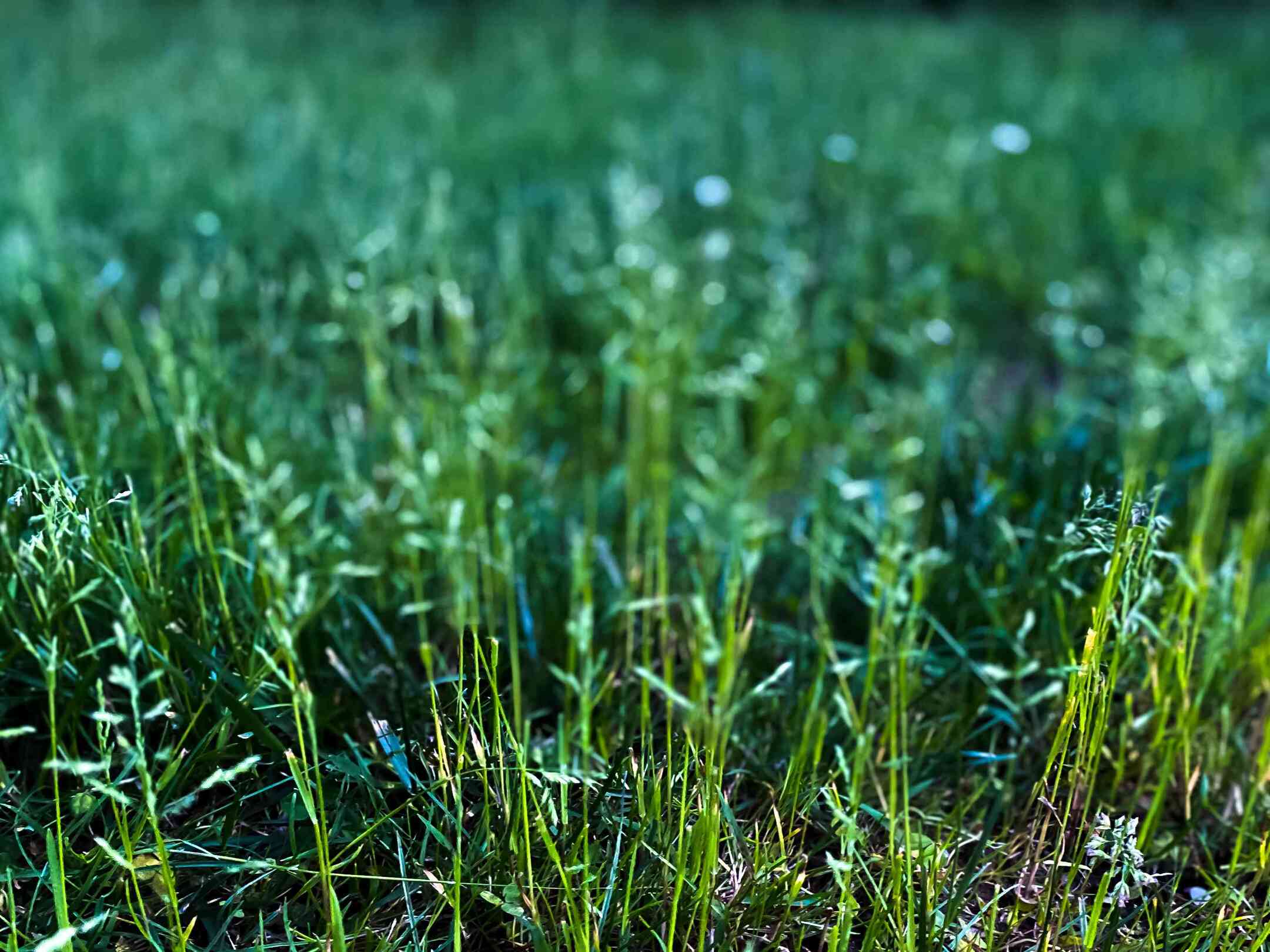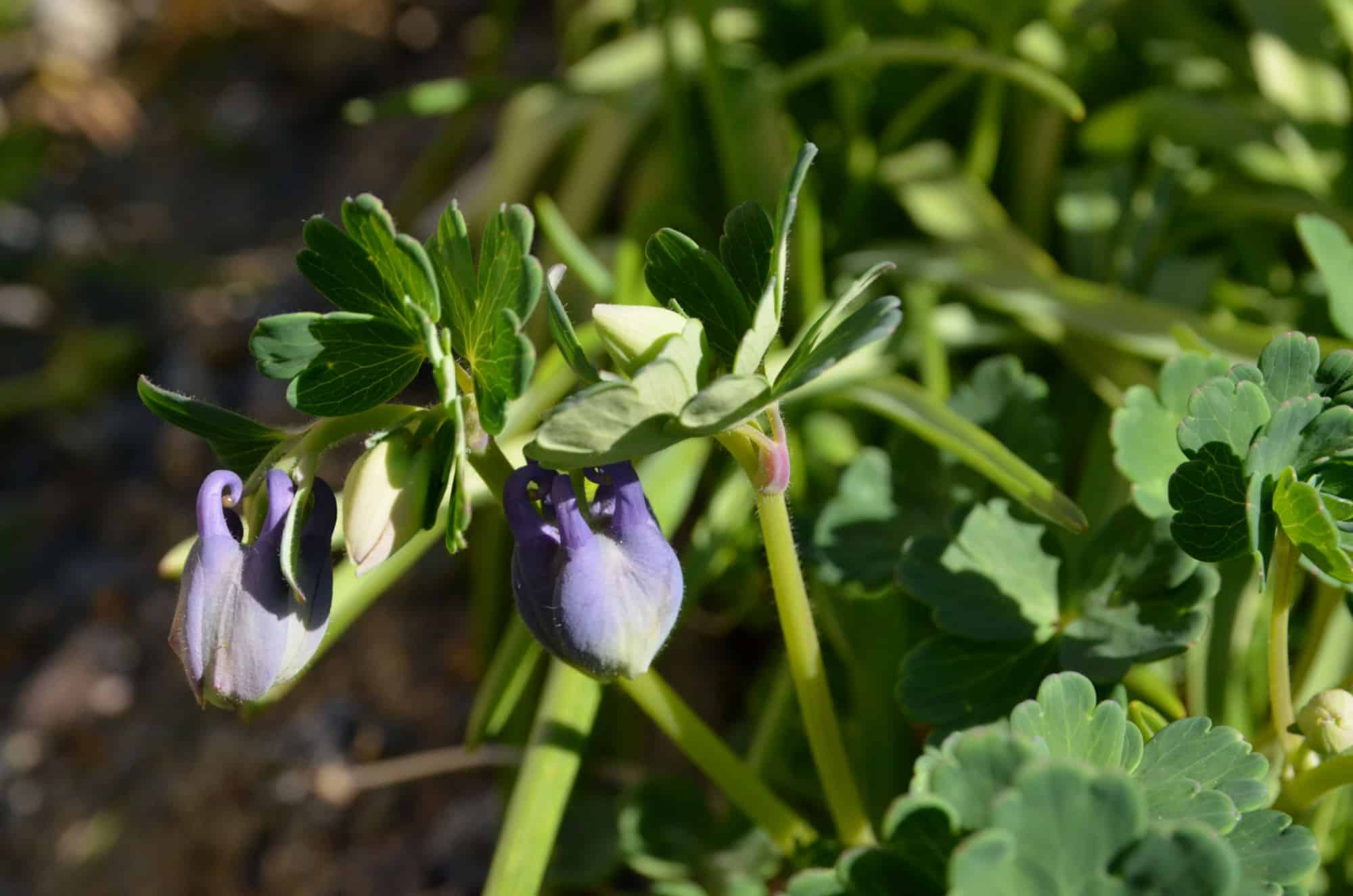Home>Garden Essentials>When To Plant Grass Seed In Ky


Garden Essentials
When To Plant Grass Seed In Ky
Modified: March 16, 2024
Learn when to plant grass seed in Kentucky and ensure a lush garden with our expert tips and guidelines. Start growing a healthy and beautiful lawn today!
(Many of the links in this article redirect to a specific reviewed product. Your purchase of these products through affiliate links helps to generate commission for Storables.com, at no extra cost. Learn more)
Introduction
Welcome to the world of gardening in Kentucky! Whether you’re a seasoned green thumb or just starting out, planting grass seed is a great way to transform your outdoor space. The vibrant, lush green of a well-maintained lawn can enhance the beauty of your home, provide a safe and comfortable area for outdoor activities, and even increase your property value.
However, growing grass from seed requires careful planning and consideration. Kentucky’s climate and soil conditions play a significant role in determining the success of your grass seed planting endeavor. Understanding the best time to plant, the proper techniques, and how to maintain your newly seeded lawn are crucial to achieving the desired results.
In this article, we will explore the optimal time to plant grass seed in Kentucky, along with practical tips on soil preparation, seed selection, planting techniques, and maintenance. By the end, you’ll be equipped with the knowledge to successfully establish a beautiful, healthy lawn that will be the envy of your neighbors.
Key Takeaways:
- Timing is crucial for successful grass seed planting in Kentucky. Spring and fall are the best seasons, offering optimal conditions for germination and growth.
- Proper soil preparation, seed selection, and planting techniques are essential for establishing a healthy and vibrant lawn in Kentucky. Pay attention to timing and take care of your grass seed to ensure success.
Read more: When To Plant Blackberry Seeds
Climate and Soil Conditions in Kentucky
Kentucky is located within USDA hardiness zones 6a to 7b, which means it experiences a mix of temperate and transitional climates. Summers in Kentucky are typically hot and humid, while winters can be cold with occasional freeze-thaw cycles. These weather patterns can impact the growth and development of grass seed.
In terms of soil conditions, Kentucky offers an array of soil types, including clay, loam, and sandy soils. Clay soil is prevalent in many areas and can present challenges for grass seed establishment due to its heavy and compact nature. Loam soil, a mixture of sand, silt, and clay, is considered the most ideal for planting grass seed as it provides good drainage and nutrient retention. Sandy soils, on the other hand, drain quickly but may lack in nutrient content.
Before planting grass seed, it’s essential to assess your soil’s composition and make necessary amendments to create an environment conducive to seed germination and growth. Conducting a soil test can help determine the pH level, nutrient deficiencies, and excesses in your soil, allowing you to make informed decisions about fertilization and soil amendment.
Now that we have an understanding of Kentucky’s climate and soil conditions, let’s delve into the best time to plant grass seed in this region.
Best Time to Plant Grass Seed in Kentucky
Choosing the right time to plant grass seed is crucial for its successful establishment in Kentucky. The climate and seasonal variations in the region play a significant role in determining the optimal planting time.
The two primary recommended times to plant grass seed in Kentucky are in the spring and fall. Each season has its own advantages and considerations, so let’s explore them in more detail.
Spring Planting
Spring is an excellent time to plant grass seed in Kentucky as the temperatures start to warm up and the soil begins to thaw. The ideal time for spring planting is typically between mid-April and late May, once the soil temperature has reached around 50 to 65 degrees Fahrenheit.
Spring planting allows the grass seed to germinate and establish itself during the favorable growing conditions of the season. The moderate temperatures and increased rainfall provide an optimal environment for seed growth. However, you may need to be mindful of potential weed competition during this time.
Fall Planting
Fall is considered the best time to plant grass seed in Kentucky. The period between mid-August and late September is ideal for sowing grass seed, as the soil is still warm from the summer and the cooler temperatures promote strong root development.
During the fall, the soil stays warm enough to facilitate proper seed germination while reducing the risk of heat stress. As the grass seed establishes itself during the fall months, it will have a head start on weed competition in the following spring. The cooler temperatures in the fall also mean less water evaporation, requiring less frequent watering of the newly seeded area.
Regardless of the season, it’s important to check the weather forecast before planting grass seed to ensure there are no extreme temperature fluctuations, heavy rainfall, or drought conditions.
Now that we know the best times to plant grass seed in Kentucky, let’s move on to the next step: preparing the soil for successful seed establishment.
Read more: When To Plant Datura Seeds
Spring Planting
Spring is an optimal time to plant grass seed in Kentucky as it offers favorable conditions for germination and seedling growth. The following tips will help you achieve successful spring planting results:
1. Soil Preparation
Start by preparing the soil in early spring, once the ground is no longer frozen. Remove any debris, such as rocks, sticks, and weeds, from the planting area. Conduct a soil test to determine the pH level and nutrient content of the soil. Adjust the pH if necessary, aiming for a range of 6.0 to 7.0, which is ideal for most grass varieties in Kentucky.
Loosen the soil by tilling or raking it to eliminate compacted areas and promote better water penetration and root growth. Smooth the surface to create a level planting bed.
2. Seed Selection
Selecting the right grass seed is crucial for a successful outcome. Consider factors such as the amount of sunlight your lawn receives, the intended use of the area (e.g., high traffic or shady spots), and your desired aesthetic. Kentucky bluegrass, tall fescue, and fine fescue are popular grass varieties for Kentucky lawns.
When purchasing seed, check the label for information on seed purity, germination rate, and weed content. Look for certified seed that meets the standards set by the Kentucky Department of Agriculture.
3. Planting Techniques
Spread the grass seed evenly across the prepared area by hand or using a broadcast spreader. Use the recommended seeding rate specified on the seed packaging, ensuring proper coverage. Lightly rake the seed into the soil to ensure good seed-to-soil contact, as this is crucial for germination. Avoid burying the seeds too deep, as they require exposure to sunlight to sprout.
Water the newly seeded area immediately after planting to ensure that the soil is moist but not waterlogged. Continue to keep the soil consistently moist, avoiding excessive dryness or saturation, as this can hamper seed germination and establishment.
Read more: When To Plant Elderberry Seeds
4. Fertilization and Maintenance
Apply a starter fertilizer to provide essential nutrients for the young seedlings. Follow the recommended application rates, and be cautious not to over-fertilize, as this can damage the tender grass seedlings.
Maintain regular watering of the newly seeded area, keeping the soil consistently moist but not soggy. Water in the early morning or late afternoon to minimize evaporation. As the grass seedlings mature, gradually reduce the frequency of watering while increasing the duration to encourage deeper root growth.
Avoid mowing the new grass until it reaches a height of at least 3 to 4 inches. Then, set your mower to a higher cutting height to prevent stress on the young plants, gradually reducing the cutting height over time.
By following these spring planting techniques, you can create a healthy and beautiful lawn in Kentucky. Now, let’s explore the benefits of fall planting and what it entails.
Fall Planting
Fall is widely regarded as the best time to plant grass seed in Kentucky. The cooler temperatures and more consistent rainfall create the perfect conditions for optimal seed germination and establishment. Here are some key tips for successful fall planting:
1. Soil Preparation
Prepare the soil in late summer or early fall for fall planting. Clear the planting area of any debris and ensure the soil is free from weeds. Conduct a soil test to determine its pH level and nutrient composition. Adjust the pH if needed, and incorporate organic matter, such as compost or well-rotted manure, into the soil to improve its structure and fertility.
Ensure the soil surface is smooth and leveled, providing a conducive environment for seed germination and growth.
2. Seed Selection
Choose the right grass seed variety that suits your lawn’s needs and the environmental conditions of your area. Popular grass varieties for fall planting in Kentucky include Kentucky bluegrass, tall fescue, and perennial ryegrass. Consider factors such as shade tolerance, drought resistance, and intended use of the lawn when selecting the seed.
Look for high-quality, certified seed that meets the standards set by the Kentucky Department of Agriculture. The packaging should provide information on seed purity, germination rate, and weed content.
3. Planting Techniques
Early to mid-fall is the ideal time to sow grass seed in Kentucky. Begin by evenly spreading the seed across the prepared area using a handheld spreader or a broadcast spreader. Follow the recommended seeding rate provided on the seed packaging to ensure proper coverage.
Rake the seed lightly into the soil to ensure good seed-to-soil contact, but avoid burying the seeds too deep. It is vital for them to receive sunlight to sprout. Water the seeded area immediately after planting to moisten the soil thoroughly.
4. Watering and Maintenance
Consistent watering is crucial for the success of fall-planted grass seed. Keep the soil moist at all times, but be careful not to overwater, as excessive moisture can lead to fungal diseases. Watering should be done in the early morning to allow the grass to dry before nightfall, minimizing disease risks.
Maintain a regular watering schedule, ensuring the soil remains consistently moist until the grass seedlings establish themselves. As the grass seedlings grow, gradually reduce the frequency of watering while increasing the duration to promote deeper root growth and drought tolerance.
5. Fertilization and Maintenance
Apply a starter fertilizer after planting to provide essential nutrients for the young seedlings. Follow the recommended application rates specified on the fertilizer packaging, being cautious not to over-fertilize, as this can damage the tender grass seedlings.
Avoid mowing the new grass until it reaches a height of at least 3 to 4 inches. Set your mower to a higher cutting height and gradually lower it over time, once the grass is well-established. This will prevent stress on the young plants.
By following these steps for fall planting, you can establish a strong and healthy lawn that will flourish in Kentucky’s climate. Now, let’s move on to preparing the soil for successful grass seed establishment.
Preparing the Soil for Grass Seed
Proper soil preparation is essential for successful grass seed establishment and the long-term health of your lawn. By taking the time to prepare the soil correctly, you create an optimal environment for seed germination, root growth, and nutrient uptake. Here are the key steps to preparing the soil for grass seed:
Read more: When To Plant Seeds For Garden
1. Clearing and Leveling
Start by clearing the area of any debris, such as rocks, sticks, and weeds. Remove any existing grass or vegetation by digging it up or using a sod cutter, especially if you’re starting from bare ground or renovating an existing lawn.
Next, inspect the soil for any low or high spots that need to be leveled. Use a garden rake or a leveling tool to create a smooth and even surface. A level planting bed will ensure uniform water distribution and help prevent pooling or uneven growth of the grass.
2. Soil Testing
Perform a soil test to assess the pH level and nutrient content of the soil. This will help you determine if any amendments are needed to create the optimal conditions for grass seed growth. Soil testing kits are available at local garden centers or through your local agricultural extension office.
Based on the soil test results, you may need to adjust the pH level by adding lime to raise the pH or sulfur to lower it. Follow the recommendations provided in the soil test report for the appropriate amounts of amendments to use.
3. Soil Amendments
Incorporating organic matter into the soil can improve its structure, drainage, and nutrient-holding capacity. Add compost, well-rotted manure, or peat moss to the top few inches of soil and mix it thoroughly. This will help create a better growing medium for the grass seed and promote healthy root development.
If your soil is heavy clay or sandy, consider adding the appropriate amendments to improve its texture and fertility. For clay soils, adding sand and organic matter can help improve drainage. For sandy soils, incorporating organic matter can enhance moisture retention and nutrient availability.
4. Soil Compaction
Address any issues with soil compaction by aerating the soil. This process involves creating small holes or channels in the soil to allow air, water, and nutrients to penetrate deep into the root zone. You can use a manual or powered aerator for this purpose.
Aerating the soil also helps to break up compacted areas and improves the overall root development of the grass. Repeat the process in multiple directions to ensure thorough aeration.
Read more: When To Plant Rhubarb Seeds
5. Final Raking
After incorporating amendments and aerating the soil, give it a final gentle raking to create a smooth and level surface. Remove any rocks, debris, or clumps of soil that may have been brought up during the soil preparation process.
Once the soil is prepared, you’re ready to proceed with selecting the right grass seed for your Kentucky lawn. Taking the time to properly prepare the soil will lay the foundation for a healthy and thriving lawn.
Selecting the Right Grass Seed for Kentucky
Choosing the right grass seed is crucial for achieving a beautiful and healthy lawn in Kentucky. The selection process should be based on several factors, including the amount of sunlight your lawn receives, the intended use of the area, and the climate conditions in your region. Here are some key considerations when selecting grass seed for Kentucky:
1. Sunlight Requirements
Consider the amount of sunlight your lawn receives throughout the day. Some grass varieties thrive in full sun, while others are more shade-tolerant. Kentucky experiences a range of sunlight conditions, so it’s important to choose a grass seed variety that matches the available light in your yard.
Kentucky bluegrass is a popular cool-season grass that thrives in full sun to partial shade. It is known for its ability to withstand the heat of Kentucky summers and maintain its vibrant green color. However, if your lawn receives limited sunlight, consider a shade-tolerant grass like fine fescue or tall fescue, which are better suited for areas with partial shade.
2. Intended Use
Consider how you plan to use your lawn. If it will be subjected to heavy foot traffic or recreational activities, such as children playing or pets running around, opt for a grass seed variety that is durable and can withstand wear and tear.
Tall fescue is a popular choice for high-traffic areas. It has a robust root system and can tolerate heavier use as compared to other grasses. Kentucky bluegrass is also durable but may require additional care to maintain its health in high-traffic areas.
Read more: When To Plant Gaillardia Seeds
3. Climate Adaptability
Ensure the grass seed you choose is suitable for the climate conditions in Kentucky. Kentucky experiences a mix of temperate and transitional climates, with hot and humid summers and cold winters.
Cool-season grasses, such as Kentucky bluegrass, tall fescue, and perennial ryegrass, are well-suited for Kentucky’s climate. These grasses thrive during the cooler months and have better tolerance for the heat of summer. They have the ability to go dormant during periods of intense heat or drought and recover once favorable conditions return.
4. Seed Mixture or Blend
Consider using a seed mixture or blend that combines different grass varieties. This approach ensures a diverse and resilient lawn that can adapt to various conditions and challenges.
A mixture typically contains two or more grass species, while a blend consists of different varieties of the same species. For example, a blend of tall fescue may include variations that have different characteristics, such as improved drought tolerance or disease resistance.
5. Quality and Certification
When purchasing grass seed, ensure you choose high-quality seed from reputable suppliers. Look for labels that indicate high purity and germination rates. Certified seed, as designated by the Kentucky Department of Agriculture, has been tested to ensure it meets specific standards for quality and purity.
Take the time to read the seed packaging, which provides important information about the seed variety, recommended usage, and any special considerations.
By considering these factors and choosing the right grass seed for your specific needs, you can establish a beautiful and resilient lawn that thrives in Kentucky’s climate. Next, let’s explore the proper techniques for planting grass seed to ensure successful establishment.
Planting Techniques for Successful Grass Seed Establishment
Proper planting techniques are crucial for the successful establishment of grass seed in Kentucky. By following these guidelines, you can improve seed germination rates, promote healthy root development, and achieve a lush and beautiful lawn. Here are the key planting techniques to ensure successful grass seed establishment:
Read more: When To Plant Bermuda Seeds
1. Seed Distribution
Evenly distribute the grass seed across the prepared soil to ensure uniform coverage. This can be done by hand or using a broadcast spreader. Following the recommended seeding rate specified on the seed packaging will help achieve the optimal density of grass seedlings.
For larger areas, consider dividing the seed into smaller portions to achieve more consistent coverage. This will help prevent clumping and ensure that all areas receive an adequate amount of seed.
2. Seed-to-Soil Contact
After spreading the grass seed, lightly rake the soil to ensure good seed-to-soil contact. This step is crucial for seed germination, as it allows the seed to absorb moisture and obtain essential nutrients from the soil.
Avoid burying the seeds too deep, as they require exposure to sunlight to sprout. Aim for a shallow burial of approximately ⅛ to ¼ inch.
3. Watering
Proper watering is essential for seed germination and seedling development. After planting the grass seed, water the area thoroughly to moisten the soil. Use a gentle spray or sprinkler to prevent the seeds from being displaced.
Continue to water the newly seeded area regularly to keep the soil consistently moist, but avoid overwatering as it can lead to fungal diseases. Aim to keep the top half-inch of the soil consistently damp until the grass seedlings have established themselves.
4. Mulching
Consider applying a thin layer of mulch, such as straw or compost, to the newly seeded area. Mulch helps retain soil moisture, protect the seed from erosion, and provide some insulation for the developing seedlings.
Avoid using a thick layer of mulch, as it can hinder seed germination and block sunlight. Aim for a layer no more than a quarter-inch thick, and monitor the area regularly to ensure the grass seedlings can emerge and grow unhindered.
Read more: When To Plant Celosia Seeds
5. Protection from Foot Traffic
Avoid walking or allowing heavy foot traffic on the newly seeded area until the grass seedlings have established themselves and are more resilient. Excessive trampling can damage the delicate seedlings and hinder their growth.
If foot traffic cannot be avoided, lay down temporary pathways or use stepping stones to protect the newly seeded area and prevent compaction.
By utilizing these planting techniques, you can improve germination rates and give your grass seed the best chance to establish a healthy and vibrant lawn. Next, let’s explore essential watering and maintenance tips for newly planted grass seed.
Watering and Maintenance Tips for Newly Planted Grass Seed
Proper watering and maintenance are crucial for the successful establishment of newly planted grass seed in Kentucky. Consistent and thoughtful care during the initial growth stages will promote healthy root development, improve seed germination rates, and ensure a thriving lawn. Here are some essential tips for watering and maintaining newly planted grass seed:
1. Watering Frequency
Water the newly planted grass seed consistently to keep the soil evenly moist. Aim to keep the top half-inch of soil consistently damp until the grass seedlings have established themselves. Watering frequency may vary depending on factors such as soil type, temperature, and rainfall, so it’s important to monitor the soil moisture regularly.
During the first few weeks, it may be necessary to water the seeded area multiple times a day to maintain moisture levels. As the grass seedlings grow and establish, gradually reduce the frequency of watering while increasing the amount of water applied each time. This will encourage deeper root growth and help the grass become more resilient.
2. Watering Technique
When watering newly planted grass seed, use a gentle spray or sprinkler to prevent displacement or damage to the seeds. Watering too forcefully can dislodge the seeds or create channels in the soil, leading to uneven growth patterns.
Water in the early morning or late afternoon to minimize evaporation and allow the grass to dry before nightfall. This reduces the risk of fungal diseases caused by prolonged moisture on the grass foliage.
Read more: When To Plant Yarrow Seeds
3. Avoid Overwatering
Avoid overwatering the newly planted grass seed as it can lead to shallow root development and increased susceptibility to diseases. Waterlogged soil can also cause the seeds to rot.
A good practice is to regularly check the soil moisture by digging a small hole or using a soil moisture meter. If the top inch or so of soil feels saturated, hold off on watering until it starts to dry out slightly.
4. Mowing Tips
Once the grass seedlings have reached a height of around 3 to 4 inches, it’s time to mow. Set your mower to a higher cutting height to avoid stressing the young plants. Gradually lower the cutting height over time as the grass becomes more established.
Never remove more than one-third of the grass height at a time during mowing. Avoid mowing wet or damp grass to prevent clumping and mower damage to the seedlings.
5. Weed Control
During the first few weeks of establishment, minimize weed competition around the newly planted grass seed by manually removing any weeds that emerge. Be careful not to disturb the grass seedlings during this process.
Avoid using herbicides during the establishment period, as they can harm the young grass seedlings. Once the grass has become more established, you can consider using weed control methods specific to the grass variety you’ve planted.
By following these watering and maintenance tips, you can help your newly planted grass seed establish strong roots, healthy growth, and eventually transform into a beautiful and resilient lawn. Next, let’s explore common issues that may arise during grass seed planting and how to troubleshoot them.
Troubleshooting Common Issues with Grass Seed Planting
While grass seed planting can be a rewarding experience, it may sometimes come with challenges. Understanding and troubleshooting these common issues will help you overcome obstacles and ensure the successful establishment of your lawn in Kentucky. Here are some common issues you may encounter during grass seed planting and their solutions:
Read more: When To Plant Snapdragon Seeds
1. Patchy Growth
If you notice patchy or uneven growth in your newly planted grass seed, it could be due to inadequate seed distribution or poor seed-to-soil contact. Ensure that you evenly distribute the seed and gently rake the soil to ensure good contact between the seeds and the soil. Consider overseeding the patchy areas to fill in gaps and promote uniform growth.
2. Weed Competition
Weeds can compete with grass seedlings for essential nutrients, water, and sunlight, hindering their growth. To minimize weed competition, manually remove any emerging weeds during the first few weeks after planting. Be careful not to disturb the grass seedlings in the process. If weed pressure is significant, consider using a pre-emergent herbicide before planting or a post-emergent herbicide that is safe for your grass variety once the grass is more established.
3. Insufficient Germination
If you notice poor germination rates or areas where the grass seed did not sprout, it could be due to various factors, such as inadequate watering, poor soil preparation, or low-quality seed. Ensure that you are watering the newly planted area consistently to keep the soil moist but not waterlogged. Double-check your soil preparation techniques to ensure the soil is loose, well-amended, and level. If necessary, consider reseeding the areas that did not germinate with fresh, high-quality grass seed.
4. Erosion and Runoff
In sloped areas, erosion and runoff can present challenges for grass seed establishment. To prevent erosion, consider using erosion control measures such as erosion control blankets or matting, which help stabilize the soil and protect the seed from being washed away. Alternatively, you can create terraces or diversion channels to redirect water flow and minimize erosion. Mulching can also provide some protection against erosion by reducing the impact of raindrops on the soil surface.
Read more: When To Plant Borage Seeds
5. Pest and Disease Issues
Pests and diseases can impact the health of newly planted grass seed. Keep an eye out for signs of pest damage, such as chewing or discoloration of the grass seedlings, and take appropriate measures to address the issue. Monitor the lawn for signs of diseases such as fungal infections and treat them promptly with fungicides if necessary. Proper watering, adequate air circulation, and regular mowing at the correct height can help prevent disease issues.
6. Nutrient Deficiencies
Inadequate soil nutrients can lead to poor grass growth and yellowing of the foliage. Conduct a soil test before planting and amend the soil as necessary to ensure it has the proper nutrient balance. Fertilize the newly planted grass seed with a starter fertilizer to provide essential nutrients for healthy growth. Follow the recommended application rates and avoid over-fertilization, which can damage the grass seedlings.
By troubleshooting these common issues and implementing the appropriate solutions, you can overcome challenges and establish a healthy and vibrant lawn in Kentucky. Remember to be patient and persistent, as it may take some time for your grass seed to fully establish and flourish. With proper care and attention, you’ll be rewarded with a beautiful and resilient lawn to enjoy for years to come.
Now that you’re equipped with knowledge to troubleshoot common issues, it’s time to put it all together and create a beautiful and thriving lawn in Kentucky. Happy planting!
Conclusion
Congratulations on your journey to establishing a lush and vibrant lawn in Kentucky! By understanding the climate and soil conditions, choosing the right grass seed, and implementing proper planting and maintenance techniques, you’re well on your way to success.
Remember that timing is key when it comes to planting grass seed in Kentucky. Whether you opt for spring or fall planting, ensure that the soil temperature and weather conditions are optimal for seed germination and growth.
Preparing the soil and selecting high-quality grass seed are essential steps in creating a fertile foundation for your lawn. Take the time to evaluate your soil’s composition, adjust the pH as needed, and incorporate organic matter to improve its structure and fertility. Selecting the right grass seed for your specific sunlight conditions, intended use, and climate adaptability will help ensure the long-term success of your lawn.
Implementing proper planting techniques, such as even seed distribution, good seed-to-soil contact, and appropriate watering, will promote successful seed germination and strong root development. Be vigilant in monitoring soil moisture levels, avoiding overwatering, and gradually adjusting watering frequency as the grass seedlings establish themselves.
Throughout the establishment process, troubleshoot common issues such as patchy growth, weed competition, insufficient germination, erosion, pests, diseases, and nutrient deficiencies. By addressing these challenges early on, you can overcome them and encourage a healthy and thriving lawn.
Remember that establishing a new lawn from grass seed takes time and patience. It may take several weeks or even months for the grass to fully establish and become resilient. During this period, provide proper care and maintenance by mowing at the correct height, addressing weed issues, and ensuring optimal soil nutrition.
With your determination and the knowledge gained from this guide, you are well-equipped to create a beautiful and sustainable lawn that will enhance the beauty of your outdoor space in Kentucky. Enjoy the process, and may your new lawn bring you years of joy and relaxation.
Frequently Asked Questions about When To Plant Grass Seed In Ky
Was this page helpful?
At Storables.com, we guarantee accurate and reliable information. Our content, validated by Expert Board Contributors, is crafted following stringent Editorial Policies. We're committed to providing you with well-researched, expert-backed insights for all your informational needs.





0 thoughts on “When To Plant Grass Seed In Ky”